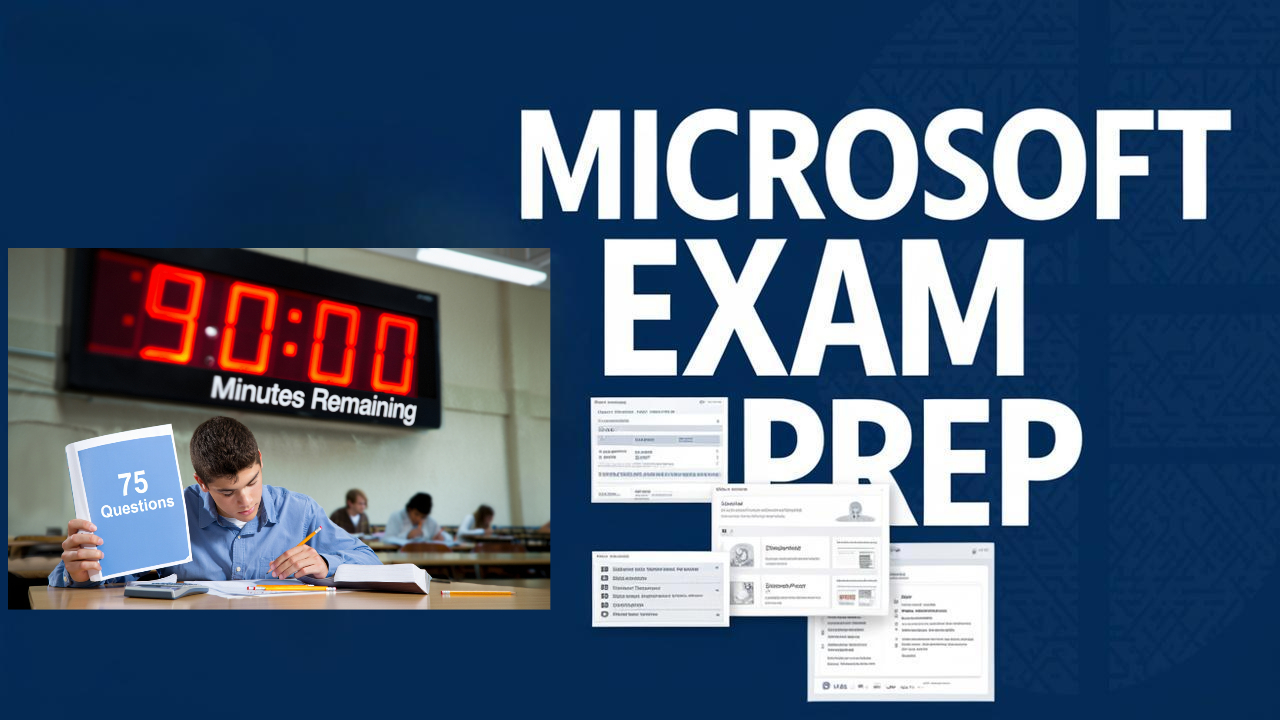Ace Your Microsoft Exams: A Comprehensive Guide to Preparation and Success
Microsoft certifications can unlock a world of opportunities, validating your skills and boosting your career. But navigating the exam process can feel daunting. Are you ready to embark on your Microsoft certification journey but feel overwhelmed by the process? From understanding the different question types to mastering time management, preparing effectively requires a strategic approach.
This comprehensive guide breaks down everything you need to know about Microsoft exams, from understanding question formats and time management to finding the best resources and utilizing practice tests. We'll equip you with actionable strategies to conquer your certification goals.

Understanding Microsoft Exam Question Types
Microsoft exams aren't just about knowing the stuff. You have to understand how they will test you on what you know. Knowing the different kinds of questions can really boost your confidence. Lets dive into the types of questions you will find.
Multiple Choice Questions
These are the typical questions you might expect. You get a question and a few choices, and you pick the best one. Read each choice very carefully. This way, you can find the right answer more easily.
- Example: select the best answer from a list of options.
- Example: identify the correct configuration setting from a list of options.

Multi-Select Questions
Sometimes, one answer just isn't enough. Multi-select questions ask you to pick more than one correct answer. Read the question closely! Know how many answers you need before you start picking.
- Tip: Carefully read the question to determine the number of correct answers required.

Drag and Drop Questions
Think of these questions like a matching game. You have to drag items and drop them in the right spot. This might mean putting things in the correct order or matching them to the right category.

Build List Order Questions
With these questions, you're putting things in order. You need to organize steps so that they match what should happen. This tests how well you understand processes.
- Tip: Pay close attention to the specific requirements of each task.

Active Screen Questions
These questions test your ability to do the task by interacting with the screen. These often require you to select from drop-down menus or enter text.

Hot Area Questions
These questions require you to click on a specific area of a screen. You need to know where to click to solve the problem.

Problem Solution Questions
These questions present a problem, and a possible solution. You decide if the solution solves the problem. They want to see if you can think critically.
- Tip: Read all the additional documentation included with the questions.

Mastering Exam Duration, Scoring, and Logistics
It's not just about what you know; it's about how you use your time and where you take the test. Let's look at the details.
Exam Duration vs. Sitting Duration
These sound alike, but they're very different. Exam duration is the real time you have to answer questions. Sitting duration is longer. It includes time for instructions and surveys too.

Understanding the Scoring System
Microsoft scores questions in a unique way. There are no points taken off for wrong answers, and some questions don't even count toward your score. It's alright to guess if you do not know the answer.
- Fact: Guessing is always better than leaving a question unanswered.

Exam Environment Options: Test Centers vs. Online Proctoring
You can take your test at a test center or at home with someone watching online. Test centers give you a quiet space. Online testing is easier, but you have to make sure your computer and room meet the rules.
- Tip: perform a system test before the actual exam.

Booking Your Microsoft Exam: A Step-by-Step Guide
Ready to book your exam? Here's what to do.
Creating a Microsoft Account
Use a personal Microsoft account (MSA), not a work or school account. If you don't, you might lose your data later.
Navigating the Exam Scheduling Process
Go to the Microsoft website. Find the exam you want and click "schedule exam". Pick a test center or online option and follow the steps. You'll need to agree to some rules.
Understanding Proctoring Requirements and Procedures
If you test online, someone will watch you through your webcam. Your computer has to meet certain needs. You'll also need a photo ID. Follow all the rules to avoid problems.

Resources: Maximizing Your Preparation Efforts
Microsoft provides different resources to help you get ready. Use what's available.
Leveraging Official Study Guides and Documentation
Microsoft provides study guides, documentation, and forums. They help to understand the structure of the exam. They also helps with the key topics, and resources you may need.
Utilizing Microsoft Learn for Self-Paced Training
Microsoft Learn offers training at your speed. You can find modules and information about Microsoft technologies.
Free Practice Assessments
Microsoft provides free practice assessments. You can find them on the Microsoft Learn platform.
- Tip: Practice in the sandbox and take assessments with enough lead time to review topics you are struggling with.

Microsoft Applied Skills
These are a great way to show you have the skills in real life.
What are Microsoft Applied Skills?
Microsoft Applied Skills are tests that show what you can do in real situations. It validates your ability to perform specific technical tasks.
Applied Skills Preparation
Getting ready for these is like prepping for any other exam. You want to review the skills that will be tested.

Staying Certified: Renewal and Beta Exams
Keep your certification current and see what's coming.
The Microsoft Certification Renewal Process
Microsoft certifications expire. You can renew them for free by taking an online assessment. This keeps your skills current.
Beta Exams: Shaping the Future of Microsoft Certifications
Beta exams help Microsoft improve its certifications. You can take them before the real test is out. This gives feedback and also get early access.
- Fact: Beta Exams generally come with heavy discounts.

Conclusion: Your Path to Microsoft Certification Success
Preparing for a Microsoft exam requires understanding the question types, mastering exam logistics, and utilizing available resources. By following this comprehensive guide, you'll be well-equipped to ace your certification and unlock new career opportunities. Remember to leverage official
Microsoft certifications can unlock a world of opportunities, validating your skills and boosting your career. But navigating the exam process can feel daunting. Are you ready to embark on your Microsoft certification journey but feel overwhelmed by the process? From understanding the different question types to mastering time management, preparing effectively requires a strategic approach.


